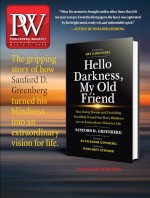In Scandinavian Noir: In Pursuit of a Mystery (Farrar, Straus and Giroux, May.), critic Lesser contrasts the Scandinavia depicted in Nordic noir to the real thing.
What’s the appeal of Scandinavian noir to you? Does it differ appreciably from other crime fiction?
I think it does differ. I read all kinds of crime fiction. I love English and French crime novels. Also Japanese crime fiction. And American writers like Michael Connelly, whose work is very much like Scandinavian noir. A distinct difference in Nordic noir is how it depicts the nature of the police force and of society at large. In these books, crime is portrayed as a social problem, not the work of a malignant individual. It’s a different take on the subject.
Where did the idea for the book come from?
I started reading Scandinavian noir fiction for pleasure. I first read Maj Sjöwall and Per Wahlöö’s 10-book Martin Beck series. Then Henning Mankell’s Kurt Wallander series. And then the dam burst on the whole scene, with Stieg Larsson’s Lisbeth novels. But they opened up everything else for me. I read Jo Nesbø for fun, too.
I had wanted to go to Sweden for years, but I always thought it was too expensive. But for my last book I traveled to Estonia, where I was practically looking across the sea at Sweden. That experience made me think, “Why not go and see what Scandinavia is really like,” since reading crime novels was a bizarre way to get to know these countries.
What do you feel were the greatest similarities and differences between the Scandinavia of noir fiction and the real Scandinavia that you encountered?
The great similarity between the novels and the reality of the countries is their social concerns. There’s a strong sense that the government is there to take care of people. The most amazing difference is the proportion of women in the police force. Women account for 50% or more of the homicide divisions in all three countries. In the novels, the women on the police force tend to be these solitary, beleaguered figures in their departments. It’s quite strange. Either the writers haven’t checked in with the real police force, or they’re relying too much on genre history and on continuing a tradition.
What do you hope readers will come away from your book with?
I hope that it will send readers to these great crime series that I cover. I also hope my book shows people that escapist fiction often isn’t just escapist, but that it offers sustenance and consolation as well. And I hope it may inspire readers to travel to Scandinavia and see a different culture and its way of life.



 Volume 267
Issue 10
03/09/2020
Volume 267
Issue 10
03/09/2020





